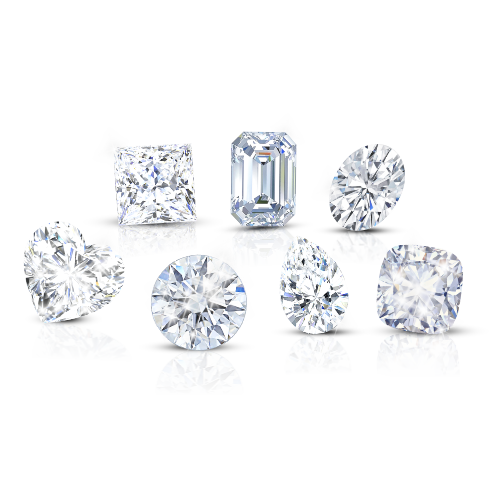Gems
Both mined and lab-made diamonds have the identical crystal structure, giving rise to the same physical properties. However, the lab grown diamonds offer the possibility of control over defects during synthesis process. Lab-grown diamonds are exactly the same as mined diamonds. Synthetically made diamonds can be even purer than those that are mined from the earth.
There are a few methods used to create lab-grown diamonds. Typically, lab-grown diamonds start with a tiny lab diamond, like a seed. The seeds are placed in a chamber called a plasma reactor (in the case of CVD synthesis) or a large mechanical press (if manufactured by HPHT). Then, depending on the technology used, some combination of heat, pressure and a carbon source are used to make the crystals grow, layer by layer.

Lab-grown diamonds are created using one of two main methods: High Pressure High Temperature (HPHT) or Chemical Vapor Deposition (CVD). Both methods replicate the conditions under which mined diamonds are formed but in a controlled laboratory setting.
HIGH PRESSURE HIGH TEMPERATURE (HPHT) :
Process: Carbon source material (such as graphite) is exposed to high pressure (around 5-6 GPa) and high temperature (about 1,400-1,800 degrees Celsius) in a press.
Formation: Under these extreme conditions, carbon atoms arrange themselves into a crystal lattice structure, forming diamond.
Timeframe: The process typically takes a few weeks to several days, depending on the desired size and quality of the diamond.
CHEMICAL VAPOR DEPOSITION (CVD) :
Chemical Vapor Deposition (CVD) is the primary method for producing synthetic diamonds. Here’s a simplified explanation of how CVD diamonds are made:
Preparation of Substrate: The process begins with the preparation of a substrate, typically a thin slice of diamond (diamond seed). This substrate acts as the foundation for diamond growth.
CVD Chamber Setup: The substrate is placed inside a vacuum chamber, which is then evacuated to create a low-pressure environment. The chamber is heated to high temperatures, typically between 700°C to 1200°C.
Introduction of Precursor Gases: A mixture of precursor gases is introduced into the chamber. These gases typically include a hydrocarbon gas (such as methane or ethylene) and a source of atomic hydrogen (usually hydrogen gas). These gases provide the necessary carbon and hydrogen atoms for diamond growth.
Activation of Precursor Gases: The precursor gases are activated using energy from a variety of sources, such as microwave plasma, hot filament, or laser. This activation breaks down the molecular bonds in the precursor gases, creating reactive species like atomic hydrogen and carbon radicals.
Chemical Reactions and Diamond Growth: The activated carbon-hydrogen species undergo chemical reactions on the surface of the substrate. Carbon atoms from the precursor gases bond to the substrate and gradually build up the diamond crystal lattice structure. Hydrogen atoms facilitate the removal of non-diamond carbon species and help in the growth process.
Control of Growth Parameters: Various parameters such as temperature, pressure, gas composition, and substrate orientation are carefully controlled to optimize the growth process and achieve desired diamond properties such as size, quality, and orientation.
Deposition Time: The deposition process continues for a specific period, ranging from several hours to several days, depending on the desired thickness and quality of the diamond film.
Cooling and Removal of Diamond Film: Once the desired thickness of the diamond film is achieved, the chamber is cooled down, and the synthesized diamond film is carefully removed from the substrate.
Post-Processing: The CVD-grown diamond film may undergo post-processing steps such as cleaning, polishing, and annealing to remove any impurities, improve surface finish, and enhance crystal quality.
Characterization and Quality Control: The synthesized diamond film is characterized using techniques such as spectroscopy, microscopy, and X-ray diffraction to assess its quality, purity, crystal structure, and other properties.
Applications: CVD-grown diamonds have a wide range of applications, including cutting tools, coatings for mechanical parts, heat sinks for electronics, high-performance optics, and even gemstones for jewelry.
Overall, the CVD diamond production process allows for the precise control of diamond properties, making it a versatile and widely used method for synthesizing high-quality diamonds for various industrial and technological applications.


